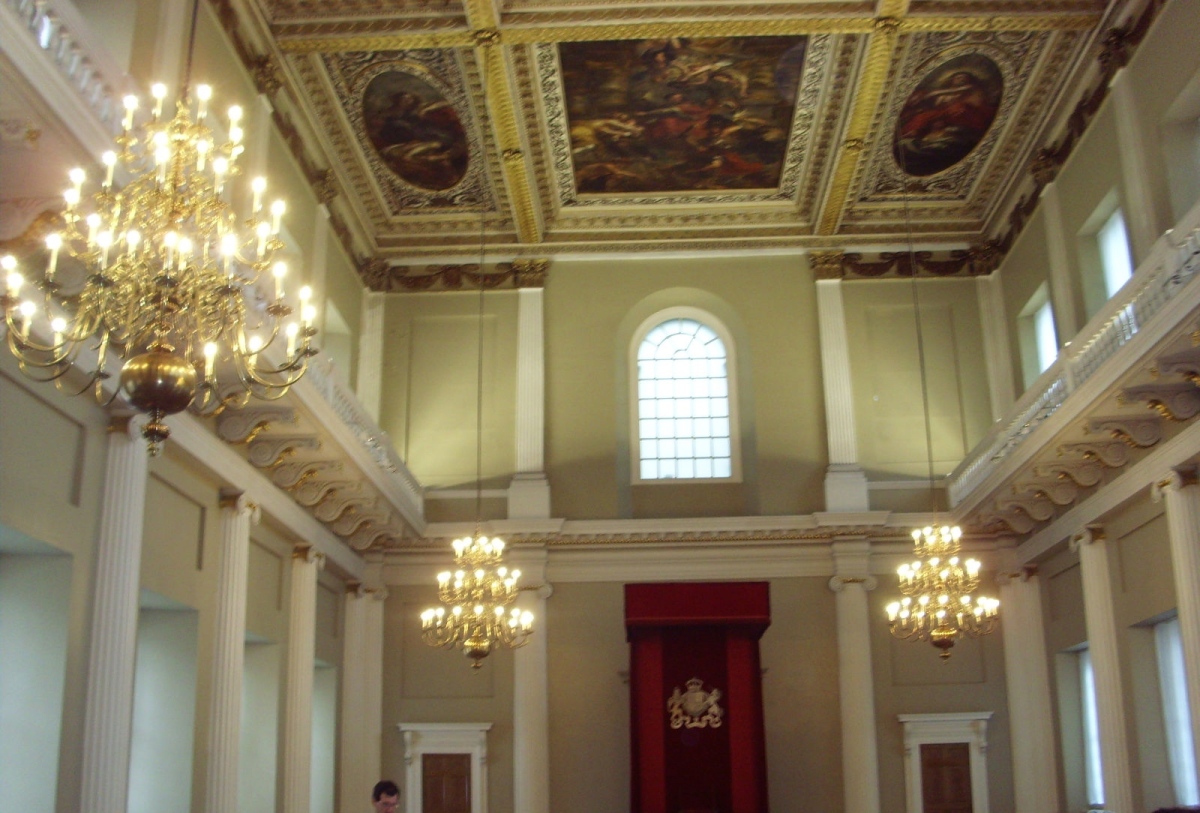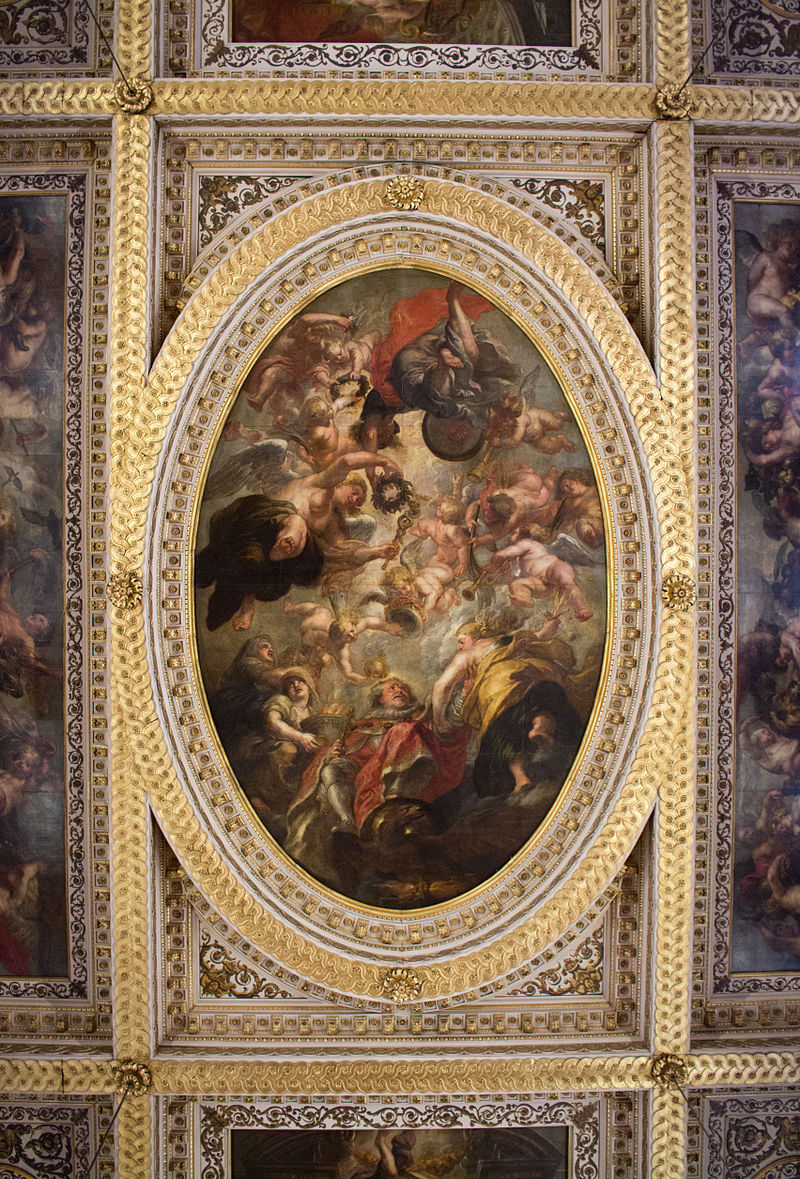On the anniversary of the execution of King Charles I in 1649, I am reminded of the place where this drama played out–the Banqueting House at Whitehall.

Completed in 1622, the Banqueting House is the only remaining structure of Whitehall Palace and is situated across from the Horse Guards. During the Tudor age, the original Banqueting House was little better than a temporary venue. When King James I of England (VI of Scotland) succeeded Elizabeth on the throne in 1603 and ushered in the Stuart Age in England, he got down to work building a proper Banqueting House. His queen, Anne of Denmark, had been fond of masques and was a patroness of the arts.
The famous 17th century architect, Inigo Jones, was commissioned to design the building. What you have is a beautiful example of Palladian architecture with stately pillars and expansive high ceilings. Galleries line the upper hall. But what is truly a marvel in the Hall did not exist until King Charles I succeeded his father to the throne.

Charles commissioned the great Flemish artist, Peter Paul Rubens, to create a series of paintings to grace the ceiling. The panels were completed in Ruben’s workshop before being shipped to England for installation.
The paintings were a delight of classical gods and motifs, the most noteworthy being the centre panel titled The Apotheosis of James I. The scene glorifies his late father, James I as though he were being crowned by the heavens. It is meant to reinforce the concept of the king being God’s representative on earth and his divine right to rule.

These paintings remain the only work of Rubens on display outside of a museum. Fortunately for the preservation of the paintings, masques ceased to be performed following their installation. The smoke from the candles would have damaged them over time.
Below the Banqueting Hall is an area known as the Undercroft. During King James’s time, it was used as the royal party den, but in later years, they held other amusements such as lotteries. It’s curved ceilings gives the impression of a cosy cave. One can imagine how it once looked, crowded with men drinking and gambling while lit with golden torchlight.

Ironically, the Banqueting House, which evolved as a testament to the divinity of kings, would stand as a confirmation of their mortality.
On a cold winter day, on 30 January, 1649, a scaffold was erected outside the Banqueting House, accessed from a second story landing. King Charles I stepped out on the scaffold, clad in two shirts to keep warm. Facing his subjects, he left them with his famous parting words, “I go from a corruptible to an incorruptible crown.” Here ended his reign.
There is so much art and history wrapped up in the Banqueting House. The next time you are visiting London, I encourage you to visit this marvellous building. You may even be greeted by a Parliamentary soldier.

This article was originally written for the English Historical Fiction Authors Blog (EHFA) and posted Feb 2, 2016.
Media:
Street view of the Banqueting House: “Banqueting House London” by en:User:ChrisO – Own work. Licensed under CC BY-SA 3.0 via Commons –
Apotheosis of James I: “Banqueting House 03” by The wub – Own work. Licensed under CC BY-SA 3.0 via Commons –
Thanks, Cryssa … as one of your American followers, this posting is a timely reminder of what can happen when a “leader” forgets that he rules at the consent of the people. Throughout history there are such examples; civil war is not a desirable outcome, and it seems to me that Charles I brought this on himself. But on your post — I always assumed he wore trousers and boots as well as the two shirts and a cap??? If not, that would be really humiliating.
LikeLiked by 1 person
Thanks for the comment! I completely agree that the ideas are very relevant today. This is the beauty of studying history- an opportunity to learn from the past.
LikeLike
Thanks for the smile about the breeches. Poor man should not have been further humiliated so I’ve made a slight alteration. 🙂
LikeLike
My main problem when visiting the Banqueting House was that they should have had really comfy beds to lie on while studying the ceilings 🙂
LikeLiked by 1 person
You can certainly get a crick in the neck admiring the art
LikeLike